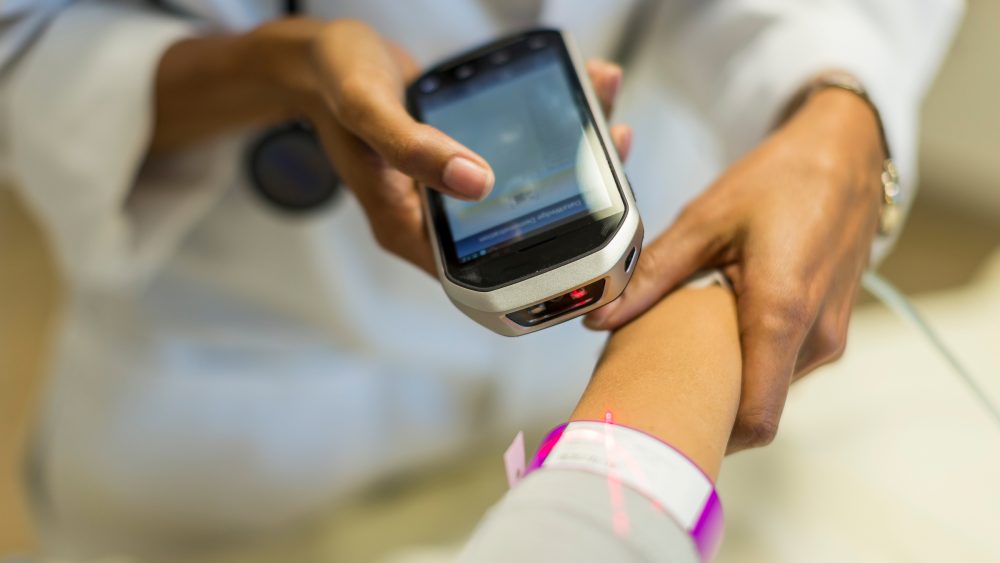VMware.com, 07.03.2022
Jens Koegler, Healthcare Industry Director, VMware EMEA

Healthcare is no longer about simply curing ailments but about delivering outstanding experiences. Central and consistent to this are three elements – the environment, the patient and data. Despite all the other possible variables, these elements will always remain and that is why the patient journey has become so vital.
It’s the subject of our latest report, ‘data in the patient journey’. We’ve given each chapter a deep dive over the last six months on this forum but will summarise the key points raised in the report in this blog.
Data & context
Central to the increasing importance of the patient journey has, of course, been the pandemic that has dramatically accelerated healthcare provision. During the pandemic, there has been increased NHS use of both established and newer technologies to reduce face-to-face contact and manage demand. Around three-fifths of UK adults who used the NHS during the early phase of the pandemic said that in doing so they used technology either in a new way or more than before.
A recently published paper by the UK government has underlined the value of data both in the present and in the future. In it, it says, “Data identified those who are most vulnerable to coronavirus. It helped us to help them shield, which protected both themselves and their families. Data was essential to our day-to-day response. And it powered vital research that helped us discover new treatments that saved lives in communities across the world. Data made all the difference.”
But where, and more specifically how, it is making a difference is what we have looked at in detail.
Making it personal
The first part of the report focused on how healthcare is becoming increasingly personalised. It highlights how understanding the data points is fundamental to the longevity and success of healthcare providers in an era where information can be captured at every stage of the interaction. This has been accelerated by many factors, not least the pandemic which turned so much of our lives digital and we have seen this manifested in healthcare with trends like virtual appointments and COVID tracking apps.
This chapter also examines how patient expectations have changed over the years. Now they have more choices about care and are more empowered with information about what they want their care experience to be. Influenced by technology in almost all other areas of life, consumers are becoming increasingly expectant when it comes to healthcare capturing and using their data. Though, this is not without challenge. This part of the report also highlights the pressure on hospital IT departments. On average, a hospital today runs between 400-600 applications and in most, there are still a large number of legacy systems that cannot be easily replaced and some of which still run on decades-old operating systems which are in need of urgent modernisation.
Modernising healthcare
This is what the second part of the report is concerned with – namely how healthcare can modernise traditional and dated elements, particularly around patient recording, tracking and monitoring. In the future, we’re likely to see artificially intelligent technology support a doctor by helping to remove some of the more time-consuming data collection tasks or highlight prior patient history that might be useful for the current diagnosis such as treatment history, any reactions to medication. A connected system would allow the doctor to make real-time updates to the prescription which would be fed directly into the local pharmacy for dispensing. For the time being, much of the data within the patient journey is being driven by consumer technology.
Smartphones have emerged as the champions in this space, due to their ability to run medical apps, and use in-built biometric and location tracking systems to record and transmit data remotely and in real-time, in a way that has been shown to be reliable and clinically meaningful. There are also specific wearables to treat ailments, too – like a strap that automatically monitors insulin levels for diabetics and adjusts it accordingly. All these developments are not only enabling, but encouraging, consumers to take control of their own health. People are now able to proactively know their numbers and, while this doesn’t necessarily prompt positive change in itself, it does empower individuals to be more self-aware and take an increasingly active role in their daily health choices.
From registration to recovery
The final chapter in the report and most recent blog examines how data is used in the hospital journey – charting how it can be captured, analysed and maximised to deliver a healthcare sector fit for the future. Starting from reception and registration where paper-based, and often repeated data entry, is being replaced by smart systems that enable registration from anywhere and recorded electronically from the start and self-registration terminals that use scanners to scan information from insurance cards or identification documents.
Moving through the journey, the report examines data use in the wards looking at innovations including; bedside devices that can show the latest series as well as personalised health data captured and delivered digitally and without a matron or clipboard in sight and shared devices for both patients, that have provided a connection an outside world of friends and family during times of forced isolation, and nurses. The latter can go to an issuing station with a token or ID card and swipe it over an electronic scanner. In a matter of seconds, the device is fueled with the right applications and data needed to do the job.
Yielding incredible results
The report also touches on the major issues shaping how data is used in healthcare touching on; budgets and IT spending, security – particularly in an era of BYOD, data sovereignty and the impact of technology on healthcare staff from surgeons to secretaries.
One thing is for sure, it’s an incredibly exciting area of development and one that can yield incredible results – the report is filled with real-world applications and customers. If you would like more information, please get in touch with us at vmcare@vmware.com.
If you would like to carry on the conversation about the themes in this blog, or anything related to your healthcare transformation, come speak to us at HIMSS in Orlando from March 14 – 18 on booth #2121 and/or book a meeting with us here or in London at DigitalHealth ReWired from March 15-16, where we will be on the Computacenter stand.
Social Kit

Source:
This article was published on VMware, 07.03.2022:








